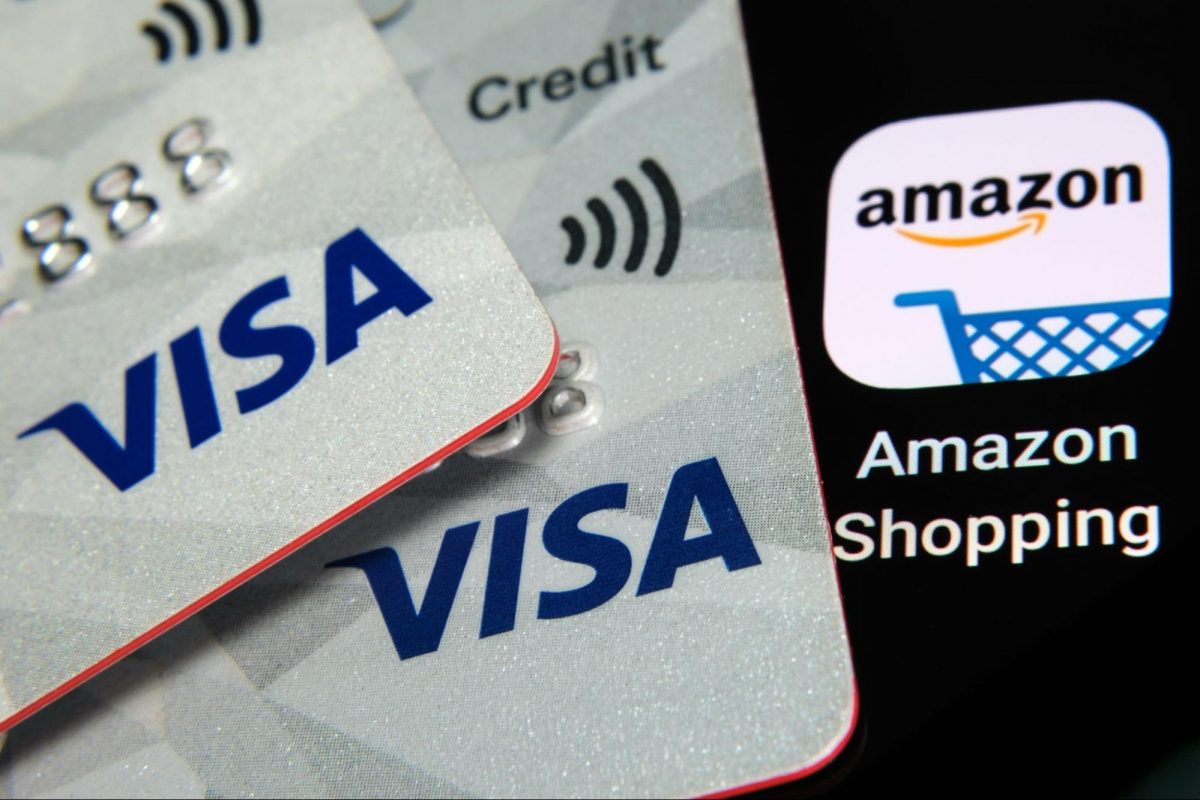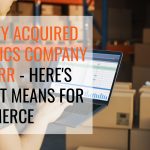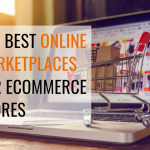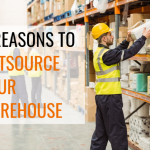It can be tough to juggle everything that’s involved when running an online business. One-person teams may be common when you’re just starting out, but as you start to grow, outsourcing some of the work may be needed so you can scale effectively without burning out.
Fortunately for Amazon sellers, they can pass on the headache of logistics and fulfillment to Amazon. Fulfillment by Amazon or FBA is an ecommerce solution that extends pick, pack, and ship services to business owners selling on the platform. Entrepreneurs can save time and focus on growing their brand and revenue.
Enrolling in Amazon’s FBA program means online store owners get access to 175 Amazon fulfillment centers, more than fifteen sorting centers, and thousands of Amazon employees.
In a time when customers expect the best from online retailers, this huge scale of operations translates to better customer experiences. Customers get fast and free shipping, seamless cross-border purchases, quick customer service, and easy returns and refunds. The FBA service isn’t free, but sellers are willing to pay in exchange for the benefits it gives them. In fact, 91% of sellers on Amazon sellers are FBA sellers.
However, on January 18, 2022, Amazon’s FBA fee increases went into effect. There will be changes on:
- Core FBA Fulfillment Fees (excluding apparel)
- FBA Fulfillment Fees for Apparel
- FBA Fulfillment Fees for Small and Light Items
- FBA Fulfillment Fees for Dangerous Goods
- FBA Fulfillment Fees for Removal and Disposal
- FBA Monthly Storage Fee and Aged Inventory Surcharge
With all these fee hikes, the big question on everyone’s mind is, will it still be profitable to have an Amazon store in 2022? What does this mean for Amazon sellers who are enrolled in the Amazon FBA program? And if you aren’t selling on Amazon yet, is it still worth looking into? Let’s find out.
What is Amazon FBA and How Does It Work?
First, let’s go over what Amazon FBA offers. Amazon FBA is a program for Amazon online sellers who need order fulfillment solutions. Amazon FBA provides a logistics team, storage space, customer service, and delivery. The online retail giant ships to 185 countries. Here’s how Amazon FBA works:
- The FBA seller sends their individually labeled and packed products to Amazon.
- The products are stored in their warehouses.
- A customer buys your product through Amazon.
- Amazon picks, packs, and ships the product to the customer.
- Amazon follows up with the customer in case there are any complaints.
- If the customer isn’t happy, the item is returned to the Amazon warehouse, and they process the refund.
- Sales are deposited into sellers’ bank accounts every two weeks.
An Overview of Amazon FBA Fees
Selling on Amazon is profitable for sellers of all sizes due to the insane amount of customer traffic on the platform. Last year alone, US-based Amazon sellers sold over 3.8 billion products. US sellers who hit at least a million dollars in sales grew by 15%. Will FBA help you grow? Remember that Amazon FBA costs should be taken into consideration when running your numbers:
- Fulfillment Fees for FBA Orders: These are fees for order fulfillment and related services.
- Monthly Inventory Storage Fees: Storage fees are charged for all items stored in an Amazon fulfillment center based on calendar month and daily average volume of inventory.
- Long-term Storage Fees: This is for items that have been stored for more than 271 days in their warehouse. This is on top of the monthly storage fee.
- Removal Order Fees and Disposal Order Fees– A per-item fee when Amazon returns or disposes of your inventory in Amazon fulfillment centers.
- Returns Processing Fees– Charged for returned orders in which Amazon offers free return shipping.
- Unplanned Service Fees– When inventory arrives at a fulfillment center without proper preparation or labeling, Amazon does it for you at a cost. This is charged on a per-item basis.
To preview seller fees for an item, go to your Manage Inventory section and click on the “Fee Preview” link.
(Source: Gorillaboi)
Changes in Amazon FBA Fees
Looking at Amazon’s price update tables, we’re approximately seeing increases of around $0.20-$0.50 per item, or 2% on the low end and up to 12% price increase on the high end. Here’s a quick glance at what’s happening, with the 2022 FBA fee tables below:
- Amazon FBA Storage Fees are higher and long-term storage will be penalized.
- “Aged inventory” now means inventory stored for over 271, shortened from 365 days. There will be an extra $1.50 per cubic foot on top of regular storage fees.
- For large, standard-sized units, Core FBA Fees now use dimensional weight. However, this doesn’t apply to small, standard-sized units.
- Storage fees are up by approximately 11% or $0.08 per cubic foot for both standard and large-sized items from January to October. There are no increases during peak months of October to December.
- There is an average increase of 4.8% for standard-sized items.
- Small standard size items are seeing the largest increases of up to 7.5%
- Apparel and clothing fees are increased by 10%
- Lithium batteries or the items that include them will cost an additional $0.11 per-unit fulfillment fee.
Core FBA Fulfillment Fee Changes (Excluding Apparel)
(Source: Amazon)
FBA Fulfillment Fee Changes for Apparel
Note: Oversize apparel tiers (small oversize, large oversize, and special oversize) will be charged the core FBA fulfillment fees.
(Source: Amazon)
Fulfillment Fee Changes for Dangerous Goods
(Source: Amazon)
Aged Inventory Surcharge
(Source: Channelkey)
Removal and Disposal Fee
(Source: Channelkey)
Product Size Tiers
Knowing your item’s product size tier helps you pack strategically. First, you need to find out the unit weight, dimensions, product volume, and dimensional weight of your packaged item.
(Source: Amazon)
Why is Amazon Increasing FBA Fees?
In a statement by Amazon, they explain why they’re increasing Amazon FBA Fees. Here are their reasons:
- With the explosion of ecommerce in the past two years, Amazon had to spend $15 billion to double its US fulfillment capacity and make sure they deliver the same top-notch level of service to their customers. Throughout that same period, fee increases were postponed and kept low, with Amazon absorbing billions of dollars worth of costs on behalf of their sellers.
- Inflation is real and it’s here. Amazon says it needs to “offset the higher permanent operating costs” they will face moving forward. They claim that FBA will still be 30% less expensive on average versus self-fulfillment.
- Amazon is working on other services to help sellers grow their business. This includes new exciting features like Search Analytics Dashboard, Product Opportunity Explorer, and an improved Brand Referral Bonus.
How Does the Amazon FBA Fee Increase Impact Amazon Sellers?
Opinions are mixed on Amazon’s fee hikes. Some sellers say that Amazon is trying to keep only the best and fastest moving products, leaving smaller businesses with slow-moving inventory to suffer from higher storage and removal costs.
While the increases may not seem like much when you look at it from a per-item level, it will definitely have an impact on the bottom line. It can affect smaller sellers, businesses who are running on razor-thin margins, and those who are already struggling to sell and maintain a shorter inventory. Big sellers who sell in large volumes and require large amounts of space for storage will also see profits get hit.
Now that you have more information about the Amazon FBA costs, should you still consider enrolling in the program or doing it yourself? Let’s take a look at the pros and cons of Amazon FBA in 2022.
Pros of Amazon FBA
Here are some of the benefits of Amazon FBA:
- Fast and free shipping, which is necessary for customer experience.
- Save time and energy on logistics, inventory management, and shipping.
- Save huge costs that come with owning and maintaining a warehouse.
- As an Amazon FBA seller, your products automatically qualify for free Prime shipping for Amazon Prime customers.
- 82% of Amazon sales are made through the coveted buy box. Not all sellers can get this and there are high standards to be met. FBA sellers are eligible for the buy box, boosting your product’s visibility and increasing chances of sales.
(Source: DataFeedWatch)
- You benefit from fast, high-quality customer service from Amazon, available 24/7.
- Returns and refunds can be a hassle. You have to handle customer service, send the return label, check the item for damages, then process the refund. Fulfillment by Amazon takes care of all of this.
- Businesses with Shopify, WooCommerce, or BigCommerce stores can benefit from FBA’s multi-channel fulfillment, streamlining your fulfillment processes.
Cons of Amazon FBA
On the other hand, here are some downsides to the FBA program:
- Amazon puts customer experience above everything else, and that means making returns extremely easy. The downside of this is more customer returns, no matter what the reason is. You risk losing inventory and have to pay extra charges for returns processing.
- Amazon allows FBA sellers to store inventory for 365 days (down to 270 with the new changes). Products may not always sell as expected and you can be stuck with thousands of products in the Amazon warehouse. Extra inventory is good if you want to make sure you won’t lose out on sales because you ran out of stock. But keep in mind that excess inventory ties up your capital and you’ll have to pay storage fees.
- Amazon has strict standards for products that are sent to Amazon warehouses. Its ASIN/UPC system means items should be packed and labeled individually. You can outsource this to prep centers that can pack them according to Amazon policies, or Amazon can do it for you, but you’ll have to factor in extra costs. For businesses with large catalogs, this can be expensive.
The Next Steps
Like any service, Fulfillment by Amazon has pros and cons. To be a successful Amazon seller, you need to stay updated with changes and really understand them so you can plan your strategies better. Here are the steps you can take to deal with the Amazon FBA Fee changes:
Step One: Use a Profit Calculator Tool.
Looking at your profitability data at the item level may sound like a painstaking task, but with these price increases, it’s crucial to look closely at your margins and see where you can improve. You can use Amazon’s Revenue Calculator or from third parties like Helium 10 and AMZ Calculator.
Step Two: Reconsider your Packaging.
Changes to the FBA program could mean that some of your products might qualify for Amazon Small and Light. Switching to this program can help you sellers save $0.50 to $1 per unit sold. If you have larger items, you can still pack lighter and smaller by using only the necessary packaging and by double-checking your package sizes against the product size tier to avoid going into the next category.
Step Three: Revise Your Inventory Strategy.
Amazon wants its warehouses to be used as fulfillment centers, not long-term storage facilities. The associated fee hikes will cost 10% more monthly to store your inventory and double the price for disposals and removals. Look at your Inventory Performance Index (IPI) and sell-through rates. Avoid excess stock, keep only what you can sell, and only store extras of your top-sellers.
Not seeing results with your current strategy? Reach out today for a free 20-minute consultation. Let’s look at the best solutions that will take your ecommerce business to the next level.







